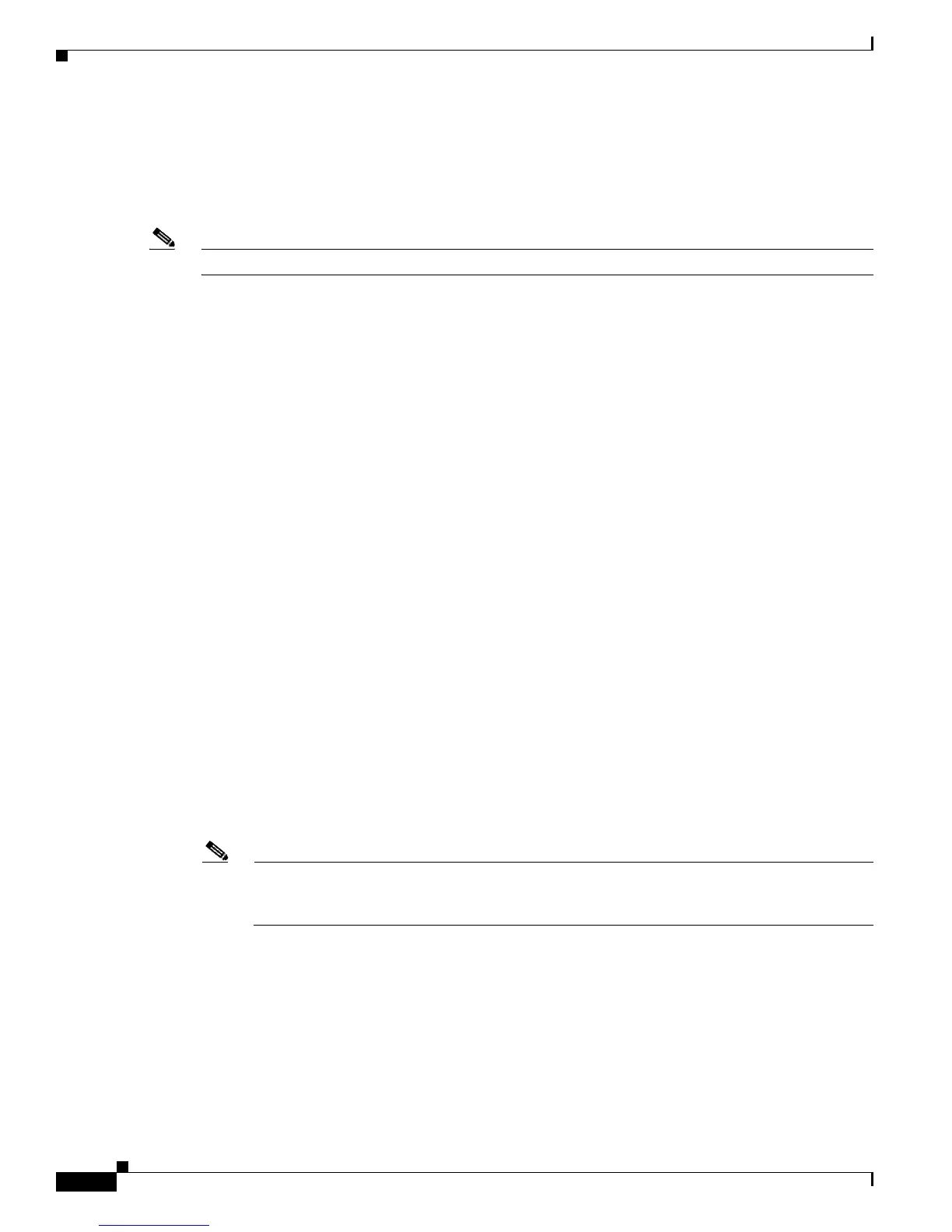11-22
Cisco 10000 Series Router Quality of Service Configuration Guide
OL-7433-09
Chapter 11 Managing Packet Queue Congestion
Restrictions and Limitations for Controlling Layer 3 Congestion
Interfaces Not Supporting the queue-limit and random-detect Commands
• ATM unshaped (no peak cell rate specified) UBR PVCs and point-to-point subinterfaces
• IP tunnel
• Virtual-access (See the “VAI QoS Inheritance” section on page 4-24.)
Note The router does not support the queue-limit and random-detect commands on inbound interfaces.
Restrictions and Limitations for Controlling Layer 3 Congestion
Queue Limit
• You cannot apply queue limits to ATM unshaped unspecified bit rate (UBR) PVCs. Unshaped UBR
PVCs do not have a peak cell rate (PCR) specified.
• For classes other than class-default, when you configure a queue limit, you must also configure one
of the following commands for the class:
–
bandwidth
–
bandwidth remaining (PRE2), bandwidth remaining ratio (PRE3), or bandwidth remaining
percent (PRE3)
–
priority
–
shape
• For releases prior to Cisco IOS Release 12.0(25)SX and Release 12.3(7)XI, you cannot combine the
queue-limit command with the random-detect command.
• The router restricts the aggregate sum of queue limits to 1,048,576 (PRE1) or 4,194,304 (PRE2)
packets.
• If you attempt to change the queue size when packets are in the queue, the router does not change
the queue size. However, changing the queue size several times can cause the buffers to become
fragmented or the buffers can still be in use. When you attempt to change the queue size again (with
or without traffic running), a traceback message or an “out of resources” message might appear, or
both messages might appear. The workaround for this is to execute the same queue-limit command
again. Use the show pxf cpu queue summary command to determine if traffic is being properly
distributed. (See CSCed81996.)
Note In Cisco IOS Release 12.2(33)SB and later releases, the show pxf cpu queue interface
summary command displays the physical interface and the number of logical links. It no longer
displays the number of priority queues, class queues and so on.
The following are examples of the messages that appear:
Without traffic running:
-Traceback= 604D58EC 604C00C0 604C0288 604C43C4 604C43E4 604C254C 604C260C
604C478C 60D4B868 603AC304 6013B410 603C6270 604569C0 604569A4
!
With traffic running:
Router# config terminal
Enter configuration commands, one per line. End with CNTL/Z.

